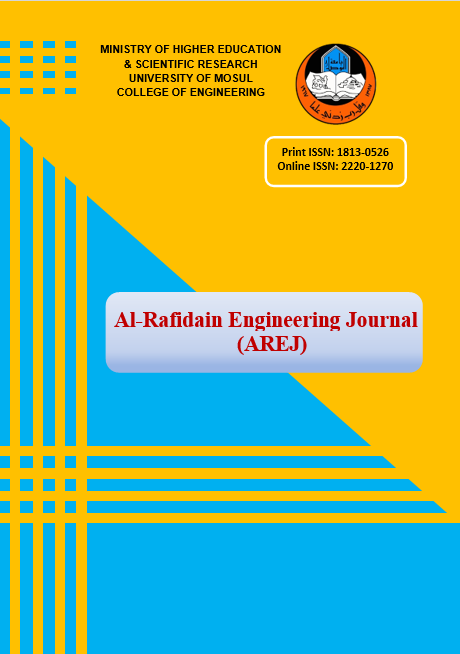Abstract
The main purpose of drainage is to provide a root environment that is suitable
for the maximum growth of plants. This study is conducted to find the drain spacing
using dynamic equilibrium concept for four different soils with different drain depths,
and compare the results with those obtained for the peak irrigation period and the steady
state equations using arithmetic, geometric and exponential means.
The study included soil texture and hydraulic conductivity tests for four different
soils. The drainable porosities of soils were found from especial curves. Two crops were
chosen(maize and cotton) and their water requirement and growing season were
estimated from previous studies. A computer program was made to obtain the drain
spacing using the previously mentioned methods. The drain spacings obtained with the
dynamic equilibrium concept were higher than those obtained with the peak irrigation
period .The difference in drain spacing becomes more evident with greater depths and
higher values of drainable porosity. The drain spacing required for maize is higher than
that for cotton. This means that the spacing is affected by both soil type and crop.
for the maximum growth of plants. This study is conducted to find the drain spacing
using dynamic equilibrium concept for four different soils with different drain depths,
and compare the results with those obtained for the peak irrigation period and the steady
state equations using arithmetic, geometric and exponential means.
The study included soil texture and hydraulic conductivity tests for four different
soils. The drainable porosities of soils were found from especial curves. Two crops were
chosen(maize and cotton) and their water requirement and growing season were
estimated from previous studies. A computer program was made to obtain the drain
spacing using the previously mentioned methods. The drain spacings obtained with the
dynamic equilibrium concept were higher than those obtained with the peak irrigation
period .The difference in drain spacing becomes more evident with greater depths and
higher values of drainable porosity. The drain spacing required for maize is higher than
that for cotton. This means that the spacing is affected by both soil type and crop.
Abstract
استهدف البحث الحالی إیجاد المسافات بین المبازل باستخدام الموازنةالدینامیکیة لترب مختلفة ولأعماق متعددة ومقارنتها مع نتائج البزل فی فترة الری القصوى،ثم مقارنتها بنتائجمعادلات الحالة المستقرة باستخدام معدل العمق الهیدرولیکی،واختیرت ثلاثة معدلات للعمق الهیدرولیکی هیالمعدل الحسابی والمعدل الهندسی والمعدل الأسی.تضمنت الدراسة إجراء تجارب مختبریة على أربع ترب للتعرف على نسجتها وتوصیلها الهیدرولیکی،ثم تحدید مسامیتها باستخدام منحنیات خاصة. کما تم اختیار محصولین إنتاجیین (الذرة والقطن) وتقدیر مقننهماالمائی وفترة نموهما من الدراسات السابقة.وباستخدام برنامج حاسوبی أعد لهذا الغرض،تم حساب المسافات بینالمبازل بطریقة الموازنة الدینامیکیة وطریقة فترة الری القصوى إضافة إلى استخدام معادلات الحالة المستقرةلغرض المقارنة.بینت النتائج أن المسافات بین المبازل لحالة الموازنة الدینامیکیة کانت اکبر من تلک لحالة فترة الریالقصوى ویزید الفرق کلما زادت المسامیة المبزولة وازدادت أعماق المبازل. وکان هذا الفرق أکبر لمحصولالذرة عنه لمحصول القطن وأن هذه المسافات لمحصول القطن أقل مما لمحصول الذرة لأعماق مبازل متساویةوللترب الأربعة.مما یدل على أن نوع المحصول بالإضافة إلى نوع التربة له تأثیر على المسافات بین المبازل
